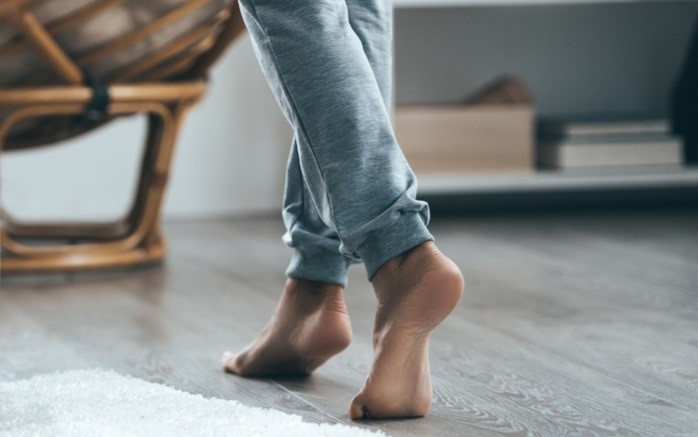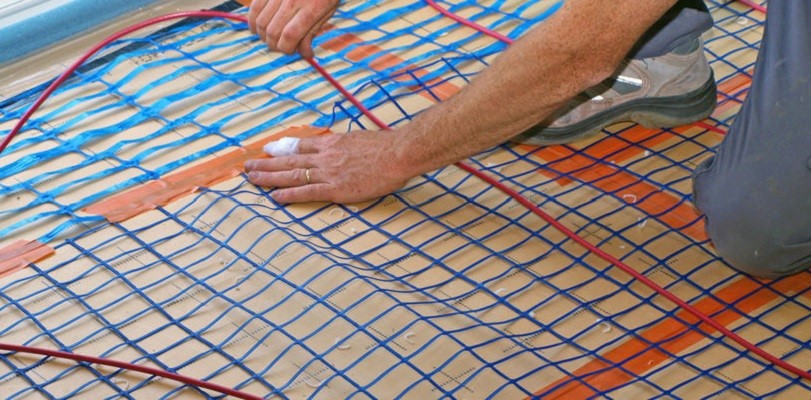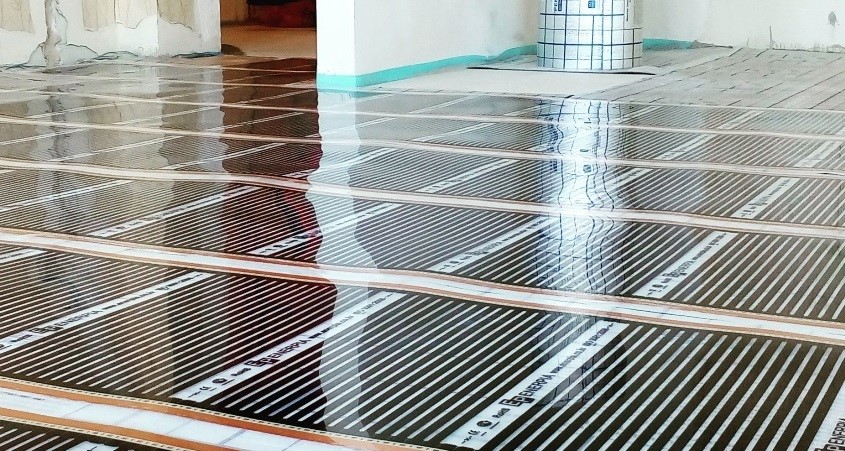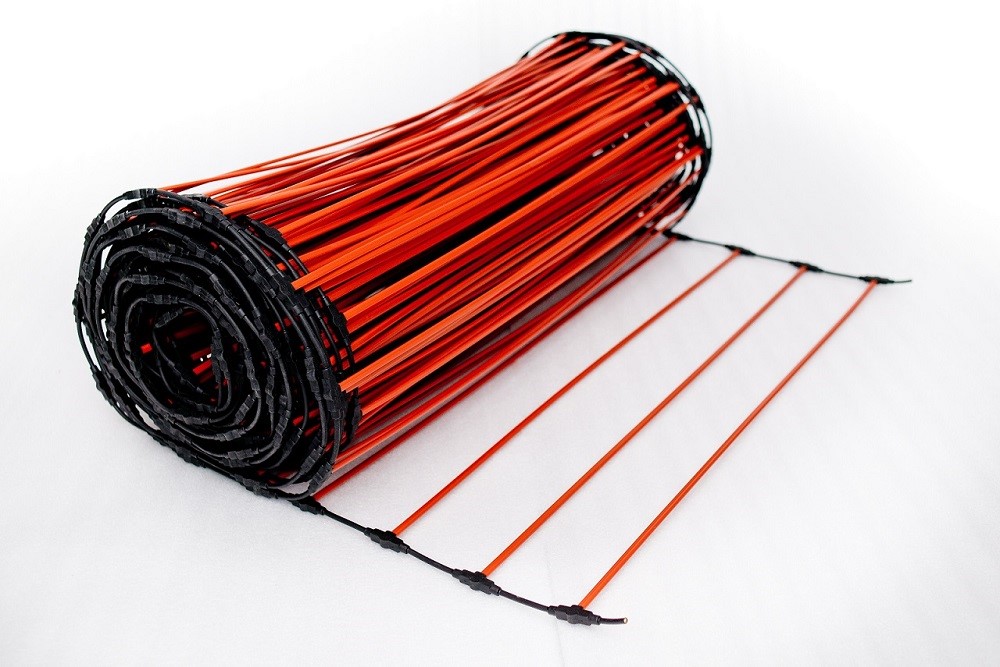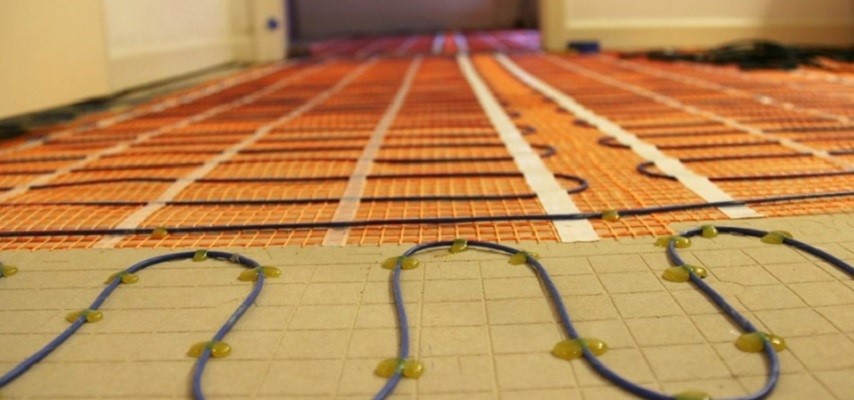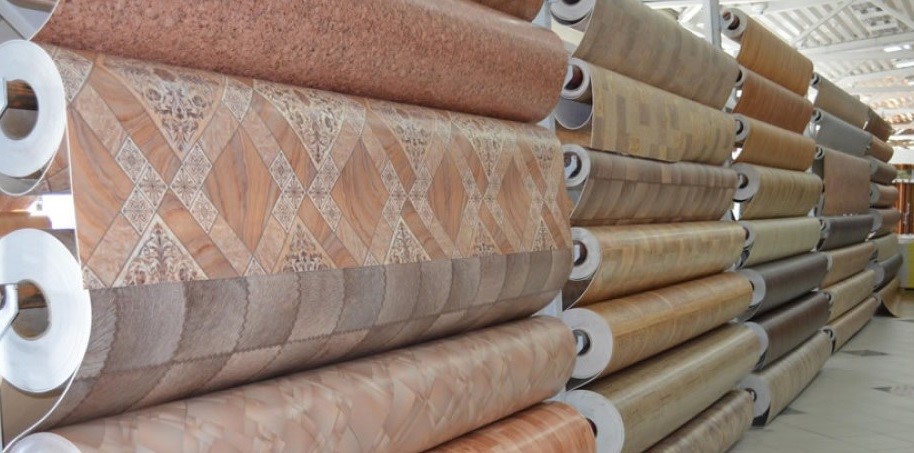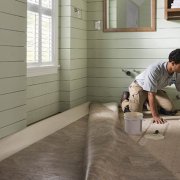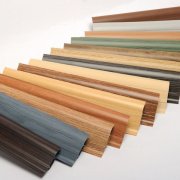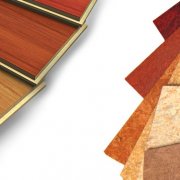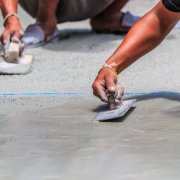Warm floor under linoleum
Warm floors in the house - comfort and even a necessity in regions with severe cold winters. When choosing linoleum as a floor covering, questions arise: what material to choose, what features of each type and how to insulate the room due to heating.
Many countries around the world have long abandoned traditional radiators on the issue of heating homes. Instead, underfloor heating has been exploited with great success. From school knowledge in physics it is known that air masses, when heated, rise up. Actually, therefore, the battery installed near the window is not able to heat the floor. The cold floor, in turn, affects the rapid cooling of the heated air in the room and leads to the loss of thermal energy.
This especially affects the family budget when an autonomous thermal system is operating in the house. To maintain the desired climate in the house, a lot of fuel is required for heating. And permanent coolness and dampness are fraught with colds, especially in children.
“Is it possible to put a warm floor under linoleum” - this is the question homeowners ask when they repair the flooring in their home. The points of view differ and there are convictions that underfloor heating can not be installed under linoleum under any circumstances. Here we will refute this statement by providing reasonable arguments. Looking ahead, a brief conclusion: it is possible to install a heating system for linoleum coating, but you need to choose the right coating and install it correctly.
The content of the article
Is it possible to lay a warm floor under linoleum
It is reasonable and profitable to lay insulation systems under linoleum. For this, appropriate technologies were invented, tested and put into operation. We omit the information on how to choose linoleum for a warm floor of water heating and talk about the infrared film field.
Infrared underfloor heating under linoleum is a universal technology that allows you to affirmatively answer the question. About 5 years ago, infrared floors were an unusual rarity. Today, this technical innovation has come into use and has become a favorite means of heating. The technology got its name because of the base made in the form of a thin heating film. A film connected to the mains emits far infrared rays, uniformly warming the floor.
When choosing a linoleum coating for infrared heating, it is important to exclude materials on heat-insulating substrates. Otherwise, the zero effect of heating will nullify all efforts. Choose linoleum not contradictory, but rather, combining with a warm floor for all its characteristics. In those. look for a special manufacturer's marking that the material is allowed to be installed on heated floors. Otherwise, you risk buying linoleum, which releases phenol or formaldehyde when heated. It is better not to learn about the dangerous effects of formaldehyde on people and pets from personal experience.
So, the main thing at the stage of choosing materials: pay attention to the compatibility of a warm floor with linoleum coating, as well as the safety class of the latter.
Which is better IR heating
To understand what warm floor to choose for linoleum in your home, consider two of its variations.
Film IR flooring is a budget option for heating, which is best suited for warming linoleum coatings. The IR film thermostat will help you set the optimum temperature.And this, in turn, will protect linoleum from spoilage.
Among other advantages - quick and easy installation (no more than 2 hours). Since the film thickness is 3 mm, the installation of a warm floor implies maintaining the height of the room. The coating will not dry the air in the room, but the ionization of the room is provided to you.
Along with the advantages of a film heat-insulated floor, it is worth considering the complexity of the installation. We advise you to immediately install an IR heating installation for an experienced installer. The electrician at the same time will evaluate the general condition of the base on which the floors will be installed. An uneven floor warps the infrared film. To prevent this from happening, you may need a screed.
Core IR floor or carbon fiber in another way. The core heating is based on carbon rods, consisting of numerous carbon fiber threads and enclosed in a polyester shell. The core floor is equipped with a self-regulating cable and therefore, unlike the film coating, it is able to control the heating temperature itself.
The rod IR heating is ideal for difficult to plan rooms, since the heating mat can be cut between the rods if necessary and sent to the other, necessary side of installation. This type of coating does not have electromagnetic radiation, it is resistant to corrosion, fireproof and equipped with a self-regulating thermal system from burnout and overheating.
Among the shortcomings of this unique technology, we highlight the high cost, the difficulty of connecting to electricity and the “wet installation”, which negates the possibility of repairs in the future.
Do I need insulation
The topic of laying the insulating layer is the second burning issue in the course of floor insulation. Thermal insulation is especially necessary when heating wooden floors. Since wood absorbs part of the heat, without thermal insulation, the efficiency of the heating system is reduced significantly.
3 millimeters is the thickness recommended for the insulating layer. From above, it is imperative to fix the reflective film. Please note: some heat-insulating materials are already equipped with a reflective layer, that is, they do not need an additional layer. The task of the reflective film is to direct the thermal energy upward, which means to increase the productivity level of the warm floors.
It is important to remember that the insulation is installed without any backlashes and joints. Between themselves, the insulating layers are glued with tape.
Underfloor heating technology
The following is a step-by-step guide on how to make a warm floor under linoleum. By following the steps below methodically and exactly following the instructions, you will install the underfloor heating under the linoleum yourself, without hiring a working team.
- We prepare the basis for installation. Check how flat the floor is, cleaned of building debris and dust. A thoroughly prepared surface will help a construction vacuum cleaner. If the coating sins with obvious bumps, you will have to fill the screed. Self-leveling mixture is the most suitable tool for this.
- If electrical wires are drawn in the field, they must be at least 50 millimeters from the insulation film. Isolation of electrical cables from wiring and floor with insulating materials is also required. Heat sources such as an oven, fireplace, chimneys and the like, it is important to place at least 20 centimeters from the IR film.
- Next, we lay a waterproofing layer, which can be ordinary polyethylene.
- On top of the waterproofing layer we roll out roll insulation, connecting the joints with tape.
- The next step along the perimeter of the heated plane is laying mats for the heating infrared floor.At the same time, we cut the heating film only in the places provided for this, and the cut is necessarily processed with insulating bitumen.
- We install special clips on the copper strips of IR heating and connect the film.
- When laying the film, we make sure that its layers do not overlap each other, and the direction of the copper busbars goes up.
- We direct the film cord to the thermostat and connect it using the circuit on the back of the controller.
- In the immediate vicinity of the heating element, we fix the temperature sensor. Thanks to the corrugation into which it is specially mounted, the sensor can be easily replaced in the future if it fails.
- At the final stage, we connect the thermostat to the mains. At the time of connection, take into account the presence of other electrical appliances connected to the same network. It is better to install an individual protective shutdown device and draw an autonomous line to the electrical panel.
Heated floor under the linoleum installed! But do not rush to proceed to the final styling. First test the performance of the warm floor. Let it work for a quarter of an hour, and you will see that each sector heats up without fail. Recheck the connection points on the film - bitumen insulation must be carried out qualitatively. Found flaws? It's time to eliminate them. If you ignore defects, a short circuit is possible.
Does heating work correctly? Proceed with the installation of linoleum. Take into account: soft coverings (for example, PVC linoleum) are easily pierced by sharp objects and even the heel of a woman’s shoe. To prevent deformation, before laying this type of linoleum, lay the plywood base or other sheet material. And in order not to damage the heating element, before installing plywood, protect the surface with polyethylene.
After fixing the plywood on the floor, proceed to the final installation. Laying on a warm floor is identical to the installation work of an unheated coating. Place linoleum on the surface and let it rest for a day. In 24 hours he will have time to straighten out and acquire the temperature of the room in which he will lie.
The choice of linoleum
What warm floor to choose for linoleum, we have sorted. Now let's talk about which linoleum will be combined with underfloor heating devices. First of all, linoleum should not contain harmful substances.
We advise you to buy a natural coating made exclusively from natural ingredients. Experience shows that some types of linoleum coating are not able to withstand constant temperature effects. Such a floor is deformed and spoils the appearance of the room.
So, using an infrared rod for heating, you can not worry about temperature control, because it is automatically controlled directly by the heating element.
If you installed film heating, it is important to keep in mind the limitations and install a temperature regulator that will ensure that the surface does not heat up more than 30 ° C. Experience has shown that a suitable operating temperature for linoleum coating is 27 ° C.
When choosing a flooring, evaluate its resistance to heat. Linoleum should not be excessively thick, as well as too thin. The best alternative is commercial-grade linoleum of medium thickness and with a protective coating. And again, we repeat the advice given above: read the manufacturer's labels. Look for signs on them that allow linoleum coating to heat and guarantee a high index of resistance to chemical and mechanical influences. Only such material will serve a long service in your home and will not have a negative impact on the health of the owner and household.
Tips & Tricks
- When choosing a warm floor for linoleum, make it clear for yourself: do you plan to use it as the main or additional heating? Linoleum coating in combination with infrared heating can only be used as auxiliary heating. After all, he will not warm the whole apartment to the desired temperature without detriment to the material.
- Do not use mastic for fixing. It will become a source of harmful emissions when heated and even contribute to the formation of surface swelling. Use tape or a stapler where possible.
- Do not let the layers of thermal film fall on top of each other. If the shape of the room is extremely complex, it is better to leave some sections of the floor unheated.
- To avoid difficult to remove creases, mount linoleum at a temperature of + 18 ° C. Do not place linoleum on a hot floor. The floor should be at room temperature.
- Interview builders, friends who already use underfloor heating in their home. Learn from their experience, learn about the "pitfalls" of installing and operating heating systems. This will help to understand which floor to choose for linoleum in your particular case.
- And finally, the main thing: do the installation sequentially, follow all the recommendations so that the result is what you expect.
Conclusion
So, we highlighted the nuances of choosing a warm floor for linoleum and examined the stages of its installation. The technology is simple and, if desired, is implemented by our own efforts. It is only important to choose the right flooring and heating that combine with each other. If you comply with the fire safety and installation rules, the installed floor will delight you with a comfortable, favorable atmosphere, protect it from dampness in the room and help maintain good health in the cold months of the year.
